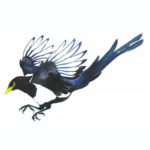Delta & Lodi Area
Staten Island
Do you find the information in this page useful?
Description of the Area
This island in the delta was acquired by the Nature Conservancy in 2002 and is managed as part of the nearby Cosumnes River Preserve (Sacramento Co.) It is farmed during the spring and summer and is rarely birded in those seasons (lots of farm equipment/truck traffic), unless there is adequate habitat for migrant shorebirds (unpredictable). During the winter months, after harvest, much of the island is given over to wildlife. Many of the fields are then flooded and provide habitat for ducks, geese, swans, and roosting sites for Sandhill Cranes. The unflooded fields provide forage for cranes, gulls, and shorebirds.
How to Get There
Take I-5 north from Stockton to the Thornton/Walnut Grove exit. Travel west toward Walnut Grove. Just past the first bridge, watch for Staten Island Rd on your left (~3.7 miles). It is well signed. Remember that access is limited to the main road only on Staten Island. Stay on this road, and bird as you drive. Public access is now restricted beyond the end of the public road, which is well signed. When stopping, be sure to pull over to the right since farm vehicles use the road all year and always have the right of way.
Note: Keep in mind that the island is a working farm year-round, and birders are guests here. So be on your best behavior! Watch for farm vehicles, obey the 25-mph speed limit, and pull well over when you stop. Do not stray from the main road.
Target Birds
Year-round: Pied-billed Grebe, American Bittern, Great Blue Heron, Great and Snowy egrets, Green Heron, Black-crowned Night-Heron, Ring-necked Pheasant, Great Horned Owl, Belted Kingfisher, Black Phoebe, Marsh Wren, Common Yellowthroat, Song Sparrow, Red-winged Blackbird, House Finch.
Winter: Tundra Swan, all species of geese and ducks, Rough-legged and Ferruginous hawks (both rare), Merlin, Peregrine Falcon, Sandhill Crane, all wintering shorebirds, Herring Gull, Barn, Burrowing (rare) and Short-eared owls, Tricolored and Yellow-headed blackbirds.
Rarities: Trumpeter Swan, Brant, Iceland, Glaucous-winged, and Glaucous gulls, Marbled Godwit, Willet, Short-billed Dowitcher. A Demoiselle Crane, an Asian species, wintered here and nearby Woodbridge Road in 2001-02, and a Common Crane spent a few days there in December 2021. Other true rarities have included Garganey (March 2020), Ruff (October 2022) and Stilt Sandpiper (July 2023). Given the vast numbers of birds that winter here, many other rarities are also possible.
EBird Hotspot Information
EBird Hotspot – Click Here
Birding At the Site
In unflooded fields, look for Sandhill Cranes feeding. Large numbers of ducks and geese, especially the Aleutian subspecies of Cackling Geese, can be found in flooded fields. (Canada Geese are relatively unusual here.) Large numbers of Tundra Swans frequent the island in winter. In fields both flooded and dry, and on the small levees between fields, you may also see many gulls, even hundreds or occasionally thousands. The most common are California, Ring-billed, and Herring gulls. Look carefully. Occasional sightings include Iceland, Glaucous-winged, and even Glaucous gulls in the winter. Look up periodically as large flocks of Snow Geese, which may number in the thousands, sometimes fly over. This is your best chance to see a Ross’s Goose, as they are noticeably smaller in flight. Check out the Tundra Swans and listen carefully. Viewing large flocks of Tundra Swans is your best chance at the rare and elusive Trumpeter Swan. When viewing ducks, check out the Canvasbacks for the occasional Redhead. Scan all the ducks for other rarities.
The roadside ditches offer cover for over-wintering sparrows, such as White- and Golden-crowned, and Lincoln’s, along with Common Yellowthroat and both Sora and Virginia Rails.
Continue birding to the end of the public access at the collapsing water tower and equipment shed on the west side of the road. At this point, turn around and retrace your route north. With the light now behind you, you may have better birding from your car, which also acts as a blind. It will appear that you can drive up onto the levee at several spots, but do not do so, as these side roads are strictly off limits to the general public. There are no restroom facilities.
More Information
Timing: Not Applicable
Parking: Keep in mind that the island is a working farm year-round, and birders are guests here. So be on your best behavior! Watch for farm vehicles, obey the 25-mph speed limit, and pull well over when you stop. Do not stray from the main road.
Facilities: No Bathrooms
Accessibility: Not Available
Dogs: Not Allowed
Bikes: Not Applicable
